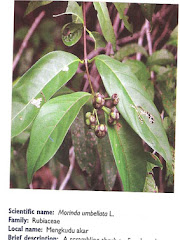KUALA LUMPUR, March 22 (Bernama) -- Water is deemed as one of the most essential element to human life, even more so than food.
The human body can last for weeks without food but it cannot last more than three days without water.
In many ways water contributes immensely to sustainable development, yet this invaluable natural resource is being continuously abused and depleted.
Mismanagement and human greed have resulted in severe water shortages and polluted water, giving rise to water crises around the globe.
In 1992, a proposal for an international day to recognise the importance of freshwater was made at the United Nations Conference on Environment and Development (UNCED).
The United Nations General Assembly responded by designating 22 March 1993 as the inaugural World Water Day. Since then a theme has been designated for each year, a specific highlight related to water.
For 2010 the core focus is water quality, hence the theme 'Clean Water For A Healthy World'.
WATER SITUATION
According to United Nations Environment Programme (UNEP), the total volume of water on Earth is about 1.4 billion km3 (cubic kilometers). The volume of freshwater resources is around 35 million km3, or about 2.5 per cent of the total volume.
Out of these freshwater resources, about 24 million km3 or 70 per cent is in the form of ice and permanent snow cover in mountainous regions, the Antarctic and Arctic regions.
Around 30 per cent of the world's freshwater is stored underground in the form of groundwater (shallow and deep groundwater basins up to 2,000 metres, soil moisture, swamp water and permafrost).
This constitutes about 97 per cent of all the freshwater that is potentially available for human consumption.
According to UNEP, freshwater lakes and rivers hold an estimated 105,000 km3 or around 0.3 per cent of the world's freshwater.
The total usable freshwater supply for ecosystems and humankind is about 200,000 km3 of water, which is less than 1 per cent of all freshwater resources.
WATER AND ITS USES
According to World Water Assessment Programme (WWAP), about 70 per cent of freshwater is used for irrigation, about 22 per cent for industry and about eight per cent for domestic use.
WWAP also said that the world's six billion people were consuming 54 per cent of all the accessible freshwater contained in rivers, lakes and underground aquifers.
The UN's Food and Agriculture Organisation (FAO) stated that water use has been growing more than twice the rate of population increase in the last century.
According to the fourth Global Environment Outlook: Environment for Development (GEO-4) Assessment, water withdrawals are predicted to increase by 50 per cent by 2025 in developing countries, and 18 per cent in developed countries.
GEO-4 is a comprehensive and authoritative UN report on environment, development and human well-being.
Based on the Human Development Report 2006 by the United Nations Development Programme (UNDP), over 1.4 billion people currently live in river basins where the use of water exceeds minimum recharge levels, leading to the desiccation of rivers and depletion of groundwater.
GLOBAL WATER CRISIS
According to FAO, by 2025 almost 1.8 billion people will be living in countries or regions with absolute water scarcity, and two-thirds of the world population could be under stress conditions.
Based on World Water Assessment Programme (WWAP), each person needs 20-50 litres of safe freshwater a day to ensure their basic needs for drinking, cooking and cleaning.
Nevertheless, according to World Health Organisation (WHO) more than one in six people worldwide (about 894 million) do not have access to this amount of safe freshwater.
Globally, diarrhoea is the leading cause of illness and death, and 88 per cent of diarrhoeal deaths are due to a lack of access to sanitation facilities, together with inadequate availability of water for personal hygiene and drinking.
Today 2.5 billion people, including almost one billion children, live without even basic sanitation. Every 20 seconds, a child dies as a result of poor sanitation. That is 1.5 million preventable deaths each year.
The statistics above come from the Water Supply and Sanitation Collaborative Council (WSSCC), an international organisation with its secretariat based in Geneva, Switzerland.
STILL MORE PROBLEMS
According to WSSCC, in Sub-Saharan Africa, treating diarrhoea takes 12 per cent of the health budget. On a typical day, patients suffering from faecal-related disease occupy more than half the hospital beds.
In a study done by WWAP, two million tonnes of human waste is disposed into water courses daily. In developing countries, 70 per cent of industrial wastes are dumped untreated into waters where they pollute the usable water supply.
This fact collaborated GEO-4's findings, which states projected increases in fertiliser use for food production and in wastewater effluents over the next three decades suggest there will be a 10-20 per cent global increase in river nitrogen flows to coastal ecosystems.
WWAP also said half of the world's wetlands have been lost since 1900.
Between 1991 and 2000 over 665,000 people died in 2,557 natural disasters of which 90 per cent were water-related events.
IMPACT OF CRISIS
The daily drinking water requirement per person is between 2 and 4 litres, but it takes 2,000 to 5,000 litres of water to produce one person's daily food.
According to FAO, it takes 1,000-3 000 litres of water to produce just one kilo of rice and 13,000 to 15,000 litres to produce one kilo of grain-fed beef.
Over the period to 2050, FAO said the world's water have to support the agricultural systems that would feed and create livelihoods for an additional 2.7 billion people.
In terms of the extent of land under irrigation globally, FAO estimates it to be around 277 million hectares or about 20 per cent of all cropland. Rain fed agriculture is practiced on the remaining 80 per cent of the arable land.
The Inter-governmental Panel on Climate Change predicts yields from rain-dependent agriculture could be down by 50 per cent by 2020.
Due to climate change, the UN's agency said Himalayan snow and ice, which provide vast amounts of water for agriculture in Asia could decline by 20 per cent by 2030.
It said irrigation increases yields of most crops by 100 to 400 per cent, and irrigated agriculture currently contributes to 40 per cent of the world's food production.
However, poor drainage and irrigation practices have led to waterlogging and salinisation of approximately 10 per cent of the world's irrigated lands.
WATER SCARCITY
The Climate Institute (CI), a Washington-based non-profit organisation, identified four main factors aggravating water scarcity, namely population growth, increased urbanisation, high level of water consumption, pollution and climate change.
According to CI, the world population in the last century has tripled and the human population is projected to increase from the present 6.5 billion to 8.9 billion in 2050.
In the coming 20 years, Asian cities are expected to grow by one billion people.
Water consumption is also expected to increase in tandem with the rapid progress and development worldwide.
Freshwater resources may also dwindle due to severe climate change impacting not only water quality but also aquatic ecosystems and groundwater.
Parts of southern China were reported recently to experience worst droughts in decades, leaving millions of people with inadequate water supply and huge areas of farmland to dry up.
Some analysts even predict that water shortages will be the key factor for conflicts and rivalries in the future as many countries shared river basins and other water resources.
-- BERNAMA
أَلَمْ تَرَ أَنَّ اللَّهَ يُسَبِّحُ لَهُ مَنْ فِي السَّمَاوَاتِ وَالأرْضِ وَالطَّيْرُ صَافَّاتٍ كُلٌّ قَدْ عَلِمَ صَلاتَهُ وَتَسْبِيحَهُ وَاللَّهُ عَلِيمٌ بِمَا يَفْعَلُونَ Tidakkah kamu tahu bahwasanya Allah: kepada-Nya bertasbih apa yang di langit dan di bumi dan (juga) burung dengan mengembangkan sayapnya. Masing-masing telah mengetahui (cara) solat dan tasbihnya, dan Allah Amat Mengetahui apa yang mereka kerjakan. an-Nur:41
Tazkirah
Sami Yusuf_try not to cry
mu'allim Muhammad Rasulullah Sallallahu alaihi waSalam
ummi_mak_mother_ibu_Sami Yusuf
zikir Tok Guru Nik Abdul Aziz Nik Mat Mu'allimul Mursyidi
syeikh masyari afasi
ruang rindu
song
Arisu Rozah
Usia 40

Mudah mudahan diluaskan rezeki anugerah Allah
usia 40 tahun

UPM

Kuatan Pahe Darul Makmur
pemakaian serban semsa menunaikan solat_InsyaAllah ada sawaaban anugerah Allah
Rempuh halangan

Abah_menyokong kuat oengajian Ijazah UPM

usia 39 tahun

usia 23 tahun_UPM
An_Namiru

Ijazah Pengurusan Hutan UPM

General Lumber_Nik Mahmud Nik Hasan

Chengal

Tauliah

Semasa tugas dgn general lumber

PALAPES UPM

UPM

Rumah yang lawa

Muhammad_Abdullah CD
semasa bermukim di Kuatan Pahe Darul Makmur
Ijazah

air terjun

Borneo land

GREEN PEACE
GREEN PEACE
Kelang

Ahlul Bayti_ Sayid Alawi Al Maliki

Asadu_ Tenang serta Berani

atTiflatul Falasthiniin

Sayid Muhammad Ahlul Bayt keturunan Rasulullah

AnNamiru_SAFARI_Kembara

AnNamiru_resting

Hamas

sabaha anNamiru fil nahri

Namir sedang membersih

Tok Guru Mualimul_Mursyid

An_Namiru
.jpg)
Namir_istirehat
.jpg)
SaaRa AnNamiru fil_Midan
.jpg)
Renungan Sang Harimau_Sabaha AnNamiru
.jpg)
Syaraba AnNamiru Ma_A
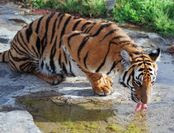.jpg)
AnNamiru_Riadhah
.jpg)
AnNamiru_Riadhah
.jpg)
AnNimru ma_A waladuha
Namir fil_Ghabi (sebut Robi...
Namir

AdDubbu_Beruang di hutan

Amu Syahidan Wa La Tuba lil_A'duwwi

AsSyahid

Namir

Tangkas
najwa dan irah

sungai

najwa

najwa

Kaabatul musyarrafah

unta

Jabal Rahmah

masjid nabawi

masjid quba

dr.eg

najwa dan hadhirah

along[macho]
![along[macho]](https://blogger.googleusercontent.com/img/b/R29vZ2xl/AVvXsEjuMi7D33CmR0_KXrCW2XigfLcUuQurcvtqOS139ncCwEzCyB-jUopk7QK7anADIenJEm2S0N6gAY1ubnACYXewgiAsI3rBjnLTawM39alLL-rEopOoVqn0w5WpLhPJH3hrXNtchEhgtyaI/s240/P7150023.JPG)
harissa dan hadhirah

adik beradik
Tongkat Ali

Tongkat Ali
herba kacip Fatimah
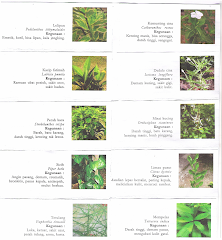
herba Kacip Fatimah
hempedu beruang
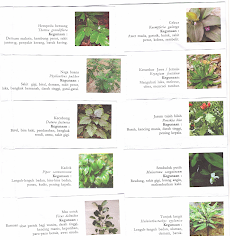
hempedu beruang
hempedu bumi

hempedu bumi
herba misai kucing

herba misai kucing
herba tongkat Ali
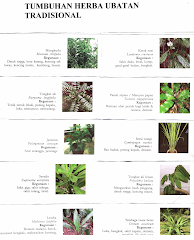.png)
Tongkat Ali
Ulama'

Ulama'
kapal terbang milik kerajaan negara ini yang dipakai pemimpin negara

kapal terbang
Adakah Insan ini Syahid

Syahid
Tok Ayah Haji Ismail

Saifuddin bersama Zakaria

Dinner....
Sukacita Kedatangan Tetamu
Pengikut
Kalimah Yang Baik

Ubi Jaga
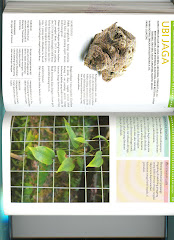
Ubi Jaga
Arkib Blog
Burung Lang Rajawali

Chinese Sparrowhawk
Kelicap Mayang Kelapa

Brown-Throated Sunbird
Kopiah

Pokok Damar Minyak

Kacip Fatimah
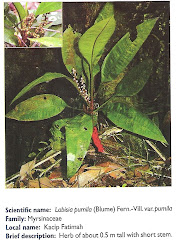
Mengkudu Akar
